Topic Question Set
Q 11
:
In the diagram given below, there are three lenses formed. Considering negligible thickness of each of them as compared to [] and [], i.e., the radii of curvature for upper and lower surfaces of the glass lens, the power of the combination is [2025]
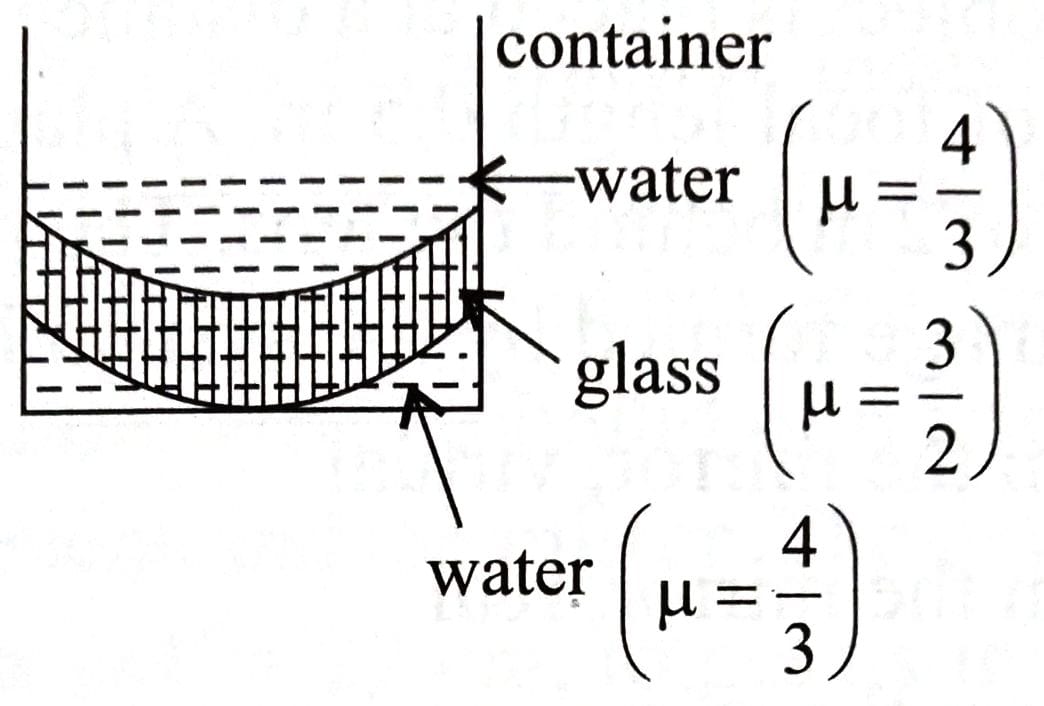

(2)
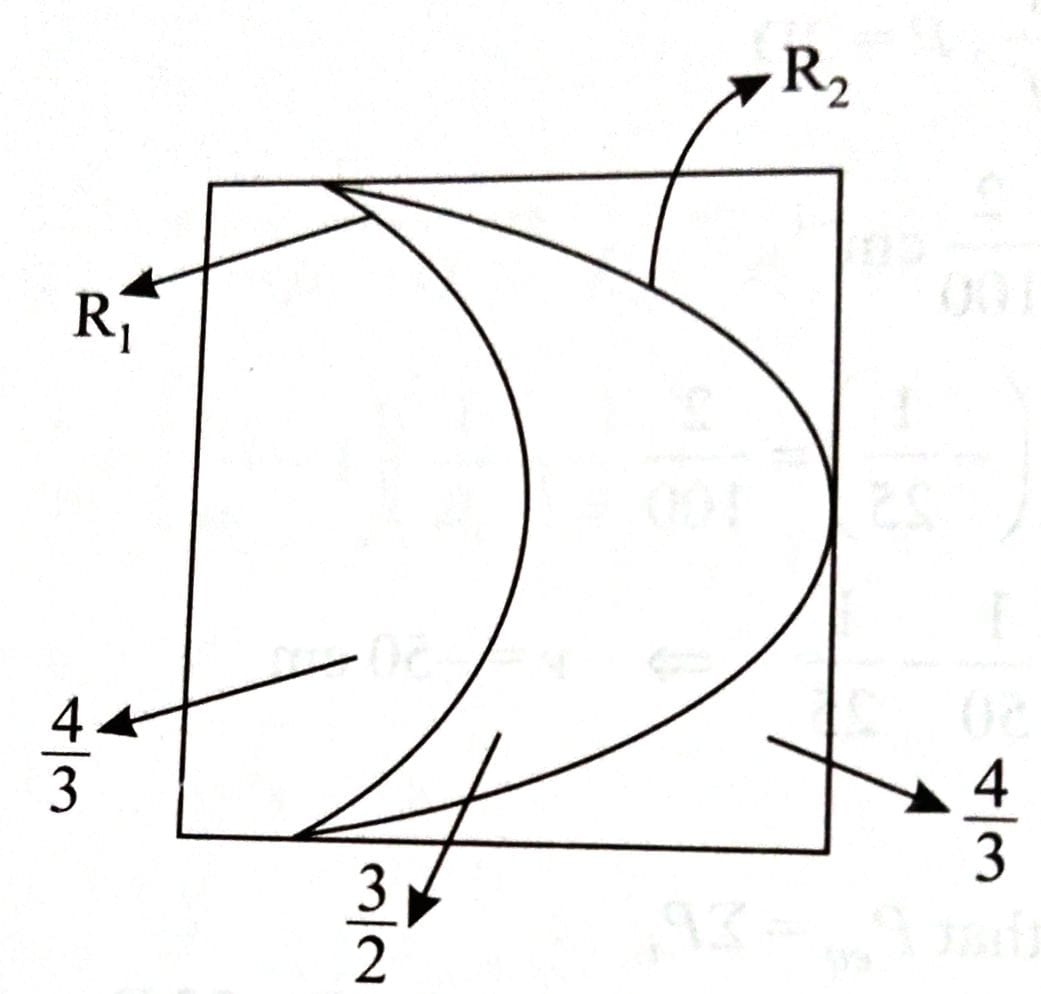
Q 12
:
Given is a thin convex lens of glass (refractive index ) and each side having radius of curvature R. One side is polished for complete reflection. At what distance from the lens, an object be placed on the optic axis so that the image gets formed on the object itself. [2025]
(4)
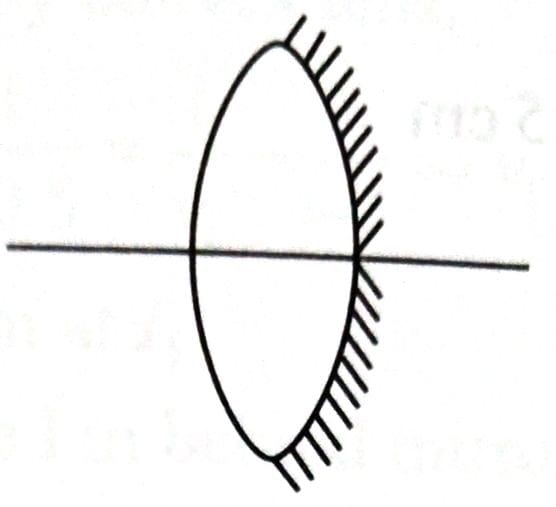
For concave mirror, object should be at 2f for the image to be at same point
Distance =
Q 13
:
A symmetric thin biconvex lens is cut into four equal parts by two planes AB and CD as shown in figure. If the power of original lens is 4D then the power of a part of the divided lens is [2025]
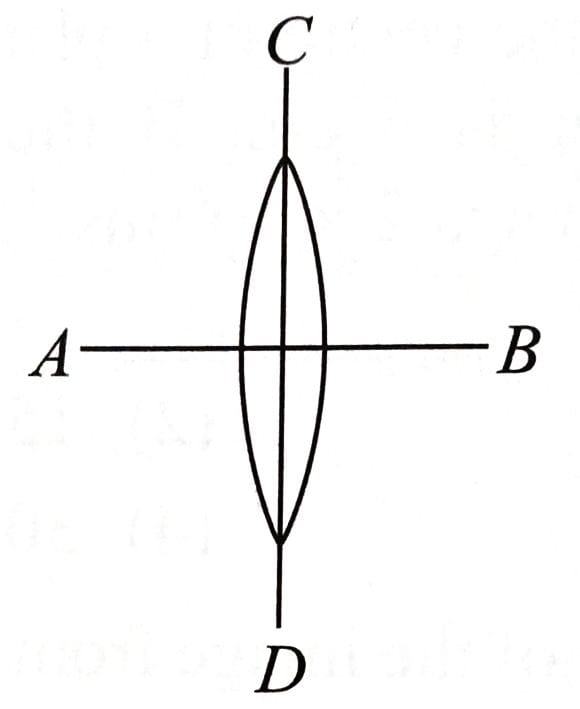

8D
4D
1D
2D
(4)
...(i)
Q 14
:
A spherical surface of radius of curvature R, separates air from glass (refractive index = 1.5). The centre of curvature is in the glass medium. A point object 'O' placed in air on the optic axis of the surface, so that its real image is formed at '' inside glass. The line O intersects the spherical surface at P and PO = P. The distance PO equals to: [2025]
5 R
3 R
2 R
1.5 R
(1)
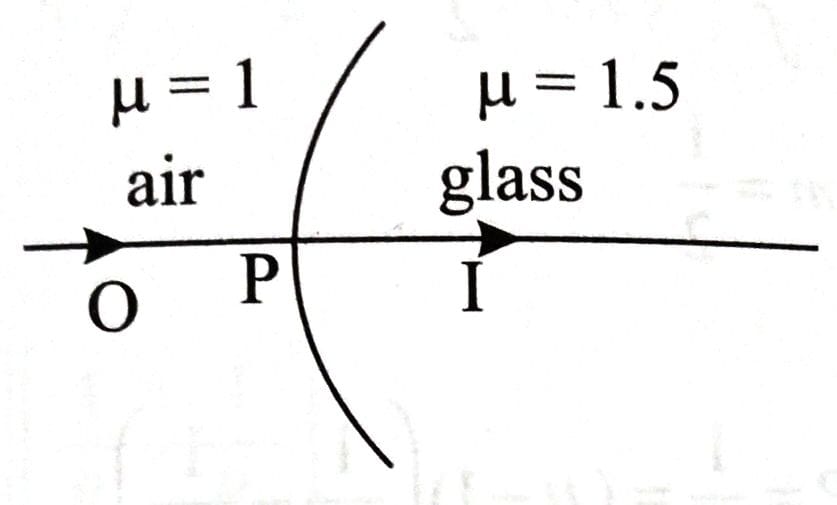
PO = u = –x
P = v = x
PO = P
Q 15
:
Given a thin convex lens (refractive index ), kept in a liquid (refractive index ) having radii of curvature || and ||. Its second surface is silver polished. Where should an object be placed on the optic axis so that a real and inverted image is formed at the same place? [2025]
(2)
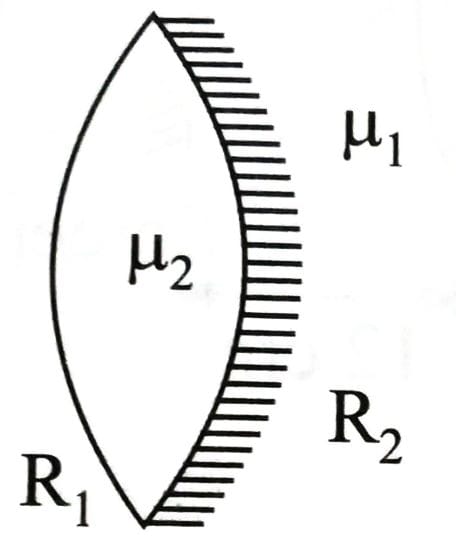
Required distance =
Q 16
:
What is the relative decrease in focal length of a lens for an increase in optical power by 0.1 D from 2.5 D? ['D' stands for dioptre] [2025]
0.04
0.40
0.1
0.01
(1)
When P = 2.5 D
When
Relative decrease in focal length
Q 17
:
A thin plano convex lens made of glass of refractive index 1.5 is immersed in a liquid of refractive index 1.2. When the plane side of the lens is silver coated for complete reflection, the lens immersed in the liquid behaves like a concave mirror of focal length 0.2 m. The radius of curvature of the curved surface of the lens is [2025]
0.15 m
0.10 m
0.20 m
0.25 m
(2)
The system act as a concave mirror of focal length 0.2 metre, it means parallel rays of light gets focused at a distance 0.2 metre in front of the polished lens.

Using,
Here,
The image formed by the curved surface acts as virtual object for plane mirror and it will from a real image in front of the plane mirror. Now rays again interact with curved surface and form final image.
Again using,
Here,
Q 18
:
A plano-convex lens having radius of curvature of first surface 2 cm exhibits focal length of in air. Another plano-convex lens with first surface radius of curvature 3 cm has focal length of when it is immersed in a liquid of refractive index 1.2. If both the lenses are made of same glass of refractive index 1.5, the ratio of and will be: [2025]
3 : 5
1 : 3
1 : 2
2 : 3
(2)
Q 19
:
A photograph of a landscape is captured by a drone camera at a height of 18 km. The size of the camera film is 2 cm 2 cm and the area of the landscape photographed is 400 . The focal length of the lens in the drone camera is [2025]
1.8 cm
2.8 cm
2.5 cm
0.9 cm
(1)

Linear size of image = 2 cm
Linear size of object cm
So,
Q 20
:
In a long glass tube, mixture of two liquids A and B with refractive indices 1.3 and 1.4 respectively, forms a convex refractive meniscus towards A. If an object placed at 13 cm from the vertex of the meniscus in A forms an image with a magnification of '–2' then the radius of curvature of meniscus is: [2025]
1 cm
-
-
-
(3)
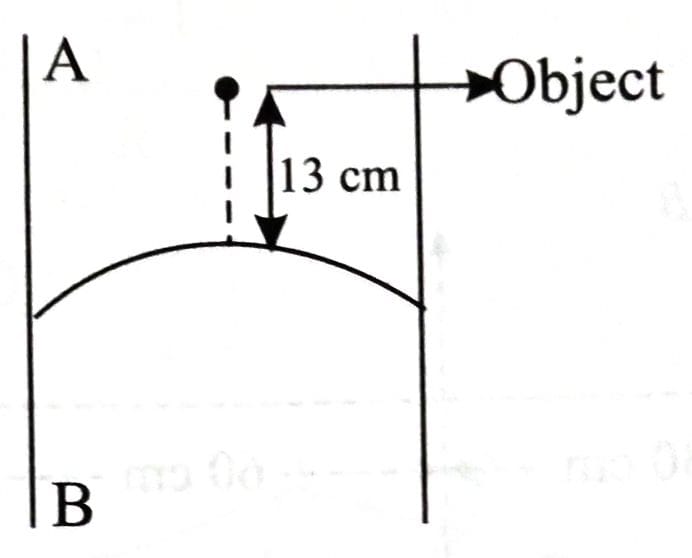
Also,

